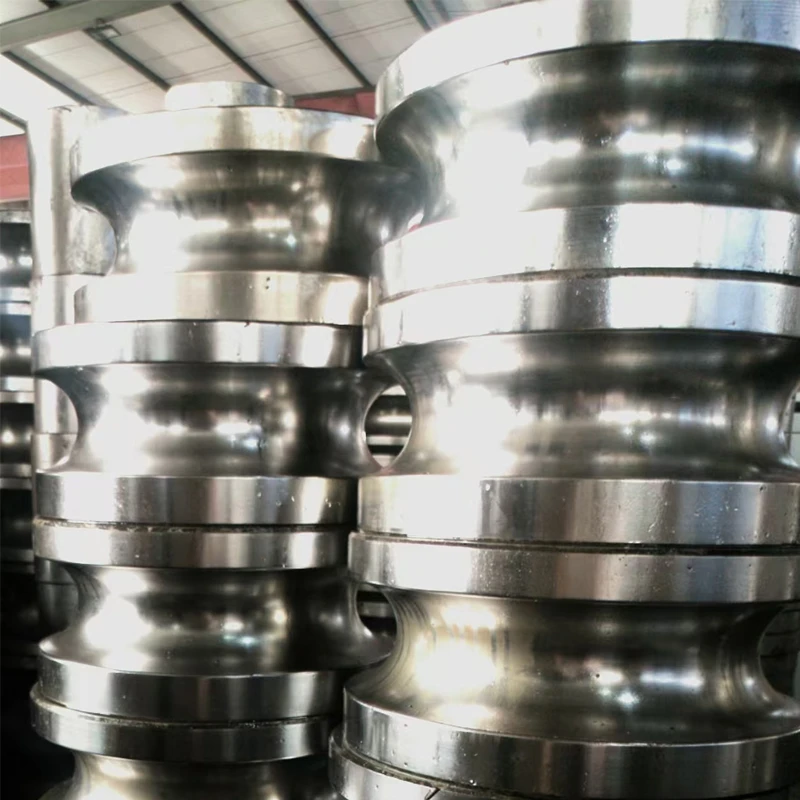On-Site Roll Forming Techniques for Efficient Metal Fabrication Solutions
On-Site Roll Forming The Future of Efficient Metal Construction
In the ever-evolving landscape of construction and manufacturing, the demand for innovative techniques that enhance productivity and reduce costs is continually rising. One such technique gaining traction is on-site roll forming, a method that offers significant advantages in the production of metal components. This article explores the concept of on-site roll forming, its benefits, applications, and the future it holds for the industry.
Understanding On-Site Roll Forming
Roll forming is a continuous bending operation used to transform metal sheets into specific cross-sectional shapes. Traditionally, roll forming is performed in a factory setting where large quantities of pre-cut materials are processed. However, on-site roll forming takes this process directly to the location where the materials are needed. This technique is particularly beneficial for long lengths and specialized components that would otherwise be cumbersome or expensive to transport.
Benefits of On-Site Roll Forming
1. Cost Efficiency One of the primary advantages of on-site roll forming is its cost-effectiveness. By eliminating the need for transportation of materials, businesses can significantly reduce shipping costs and minimize material waste. Furthermore, the production of metal components on-site allows for just-in-time manufacturing, reducing the need for extensive inventory.
2. Flexibility and Customization On-site roll forming provides remarkable flexibility. As construction projects often encounter changes in design or specifications, the ability to adjust the roll forming process in real-time is invaluable. This flexibility ensures that custom components can be fabricated as needed, adhering to architectural requirements and client preferences without unnecessary delays.
3. Time Savings Time is of the essence in the construction industry, and on-site roll forming helps save valuable project time. The immediate production of metal components onsite means that there is no waiting period for materials to be shipped from a factory, allowing for quicker assembly and progress on the overall project. This leads to reduced labor costs as workers can proceed with installation without extended downtime.
on site roll forming

4. Reduction of Waste On-site roll forming minimizes waste generated from cutting and handling materials. Since components are manufactured to the exact specifications required for each job, there is a significant reduction in scrap and surplus materials. This aspect not only contributes to cost savings but also aligns with growing environmental concerns, promoting more sustainable construction practices.
5. Quality Control By manufacturing components on-site, companies have greater control over the quality of materials used and the production process itself. This allows for immediate adjustments and inspections, ensuring that the end products meet all desired specifications and regulatory standards.
Applications of On-Site Roll Forming
On-site roll forming can be utilized in a variety of industries and applications, including but not limited to
- Roofing and Cladding The production of metal roofing sheets and wall cladding directly on-site allows for seamless integration and fewer seams, resulting in better waterproofing and aesthetics. - Structural Components Businesses can fabricate structural elements, such as beams and trusses, tailored to specific load requirements, significantly enhancing the structural integrity of a project. - Signage and Displays Custom signage can be created quickly and efficiently, reducing the lead time often associated with conventional manufacturing processes.
The Future of On-Site Roll Forming
As technology continues to advance, the future of on-site roll forming appears promising. Innovations in mobile roll forming machines, advanced materials, and automated processes are poised to further improve efficiency and reduce costs. Additionally, the trend towards sustainable and lean construction methods is likely to drive greater adoption of on-site roll forming practices as companies seek to minimize waste and optimize workflow.
Ultimately, on-site roll forming represents a paradigm shift in the production of metal components within the construction industry. By providing cost savings, flexibility, speed, and quality control, this technique is transforming traditional manufacturing processes and enabling companies to meet the challenges of modern construction projects head-on. As the industry continues to embrace innovative solutions, on-site roll forming will undoubtedly play a vital role in shaping the future of construction.
-
High Frequency Straight Seam Welded Pipe Production Line-BzZhou Xinghua Machinery Equipment Manufacturing Co., LTD.|Precision Welding, High EfficiencyNewsJul.30,2025
-
High Frequency Straight Seam Welded Pipe Production Line|BzZhou Xinghua|Precision Welding&EfficiencyNewsJul.30,2025
-
High Frequency Straight Seam Welded Pipe Production Line - BzZhou Xinghua|Precision Engineering&EfficiencyNewsJul.30,2025
-
High-Frequency Straight Seam Welded Pipe Production Line-BzZhou Xinghua Machinery Equipment Manufacturing Co., LTD.NewsJul.30,2025
-
High-Frequency Straight Seam Welded Pipe Production Line-BzZhou Xinghua Machinery Equipment Manufacturing Co., LTD.|Precision Manufacturing, High EfficiencyNewsJul.30,2025
-
High Frequency Straight Seam Welded Pipe Production Line-BzZhou Xinghua Machinery Equipment Manufacturing Co., LTD.|Precision Steel Pipe Manufacturing&Industrial EfficiencyNewsJul.29,2025


